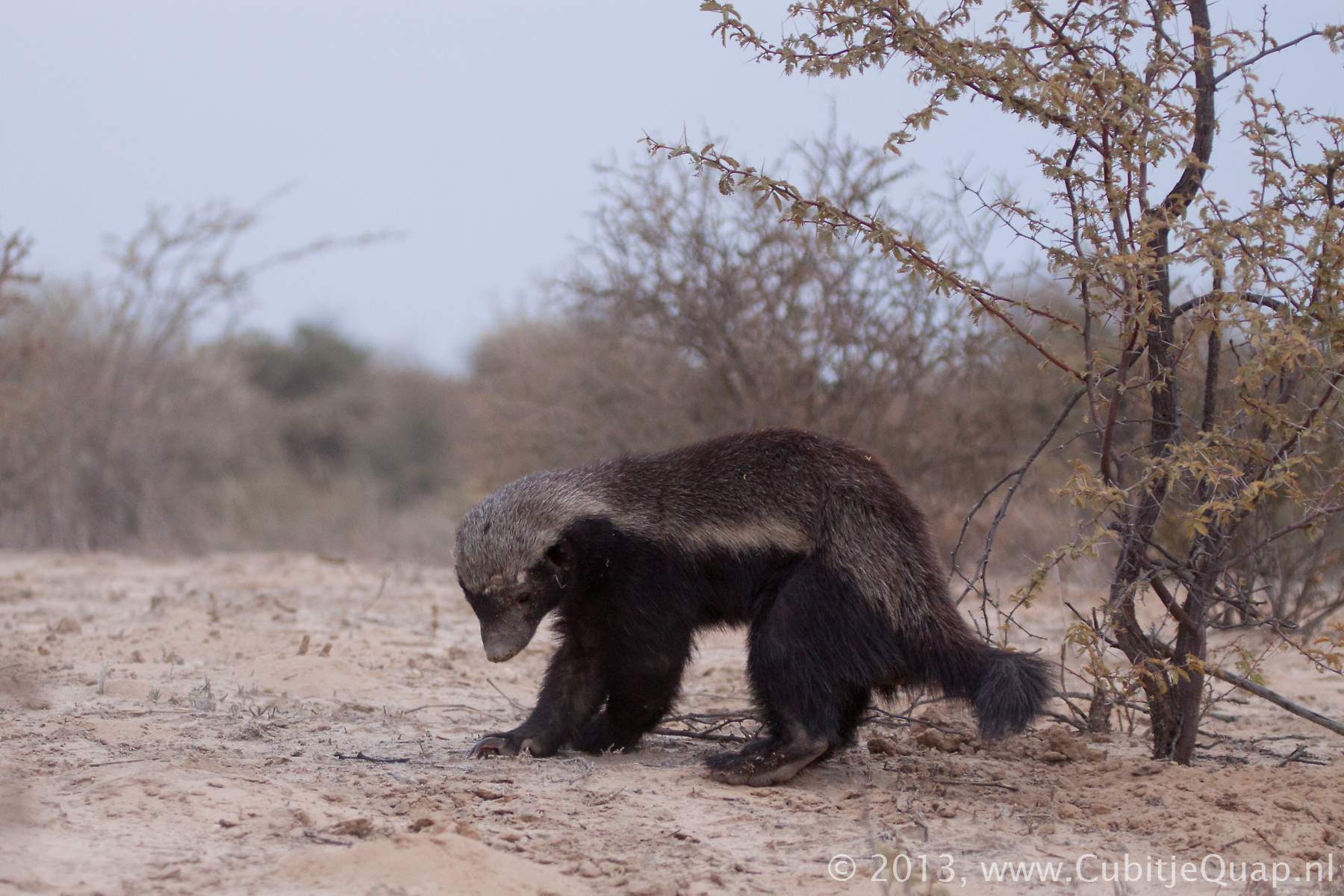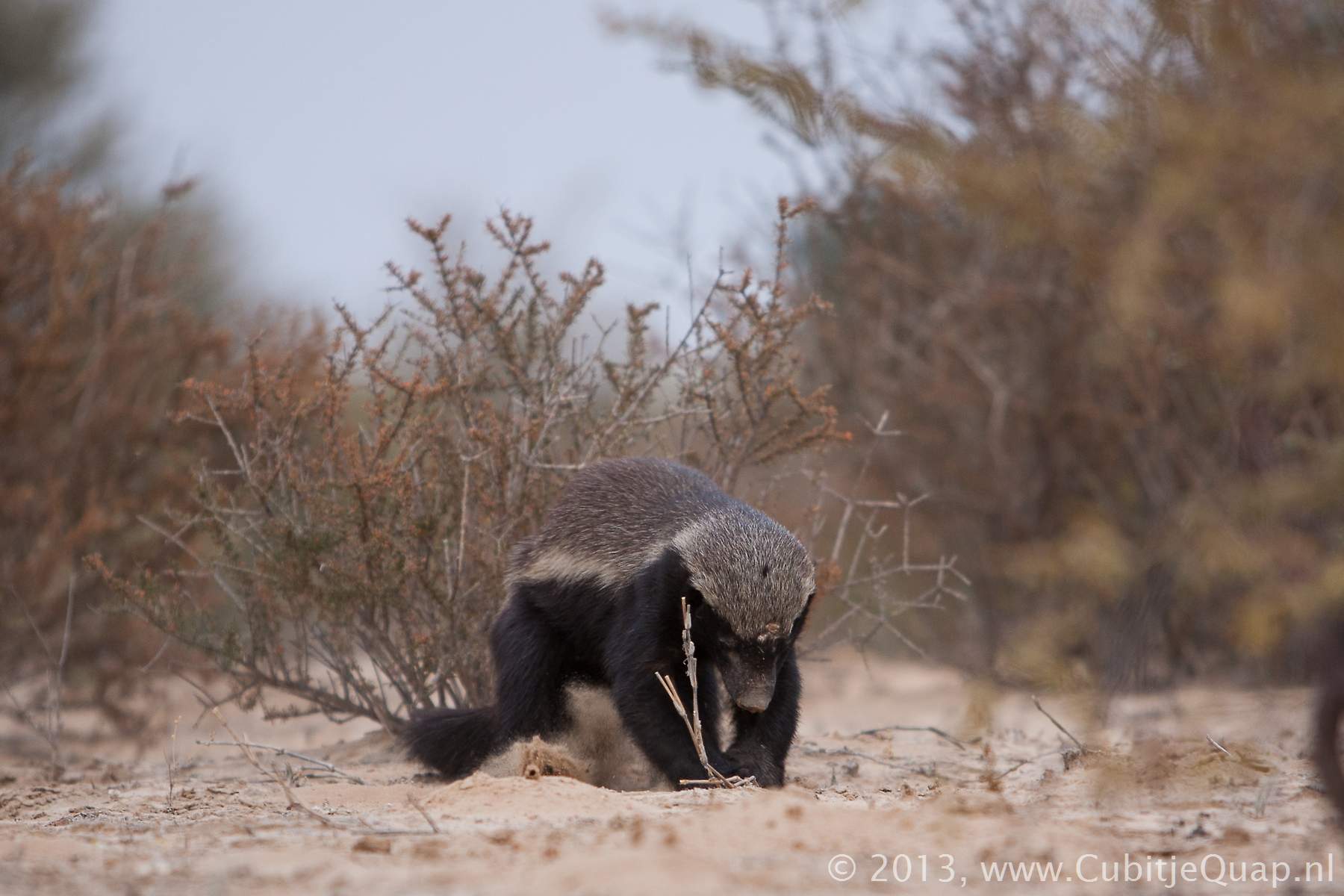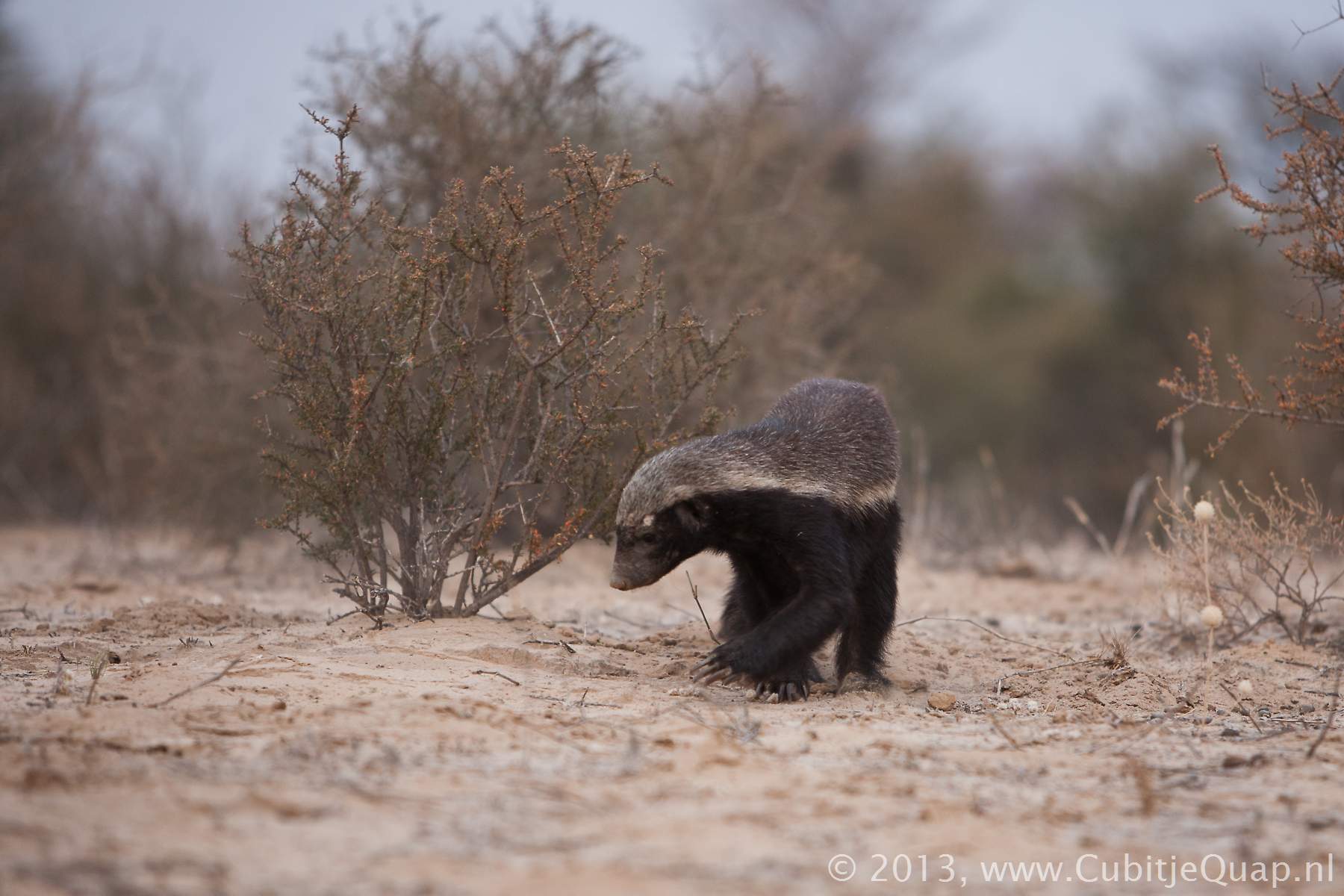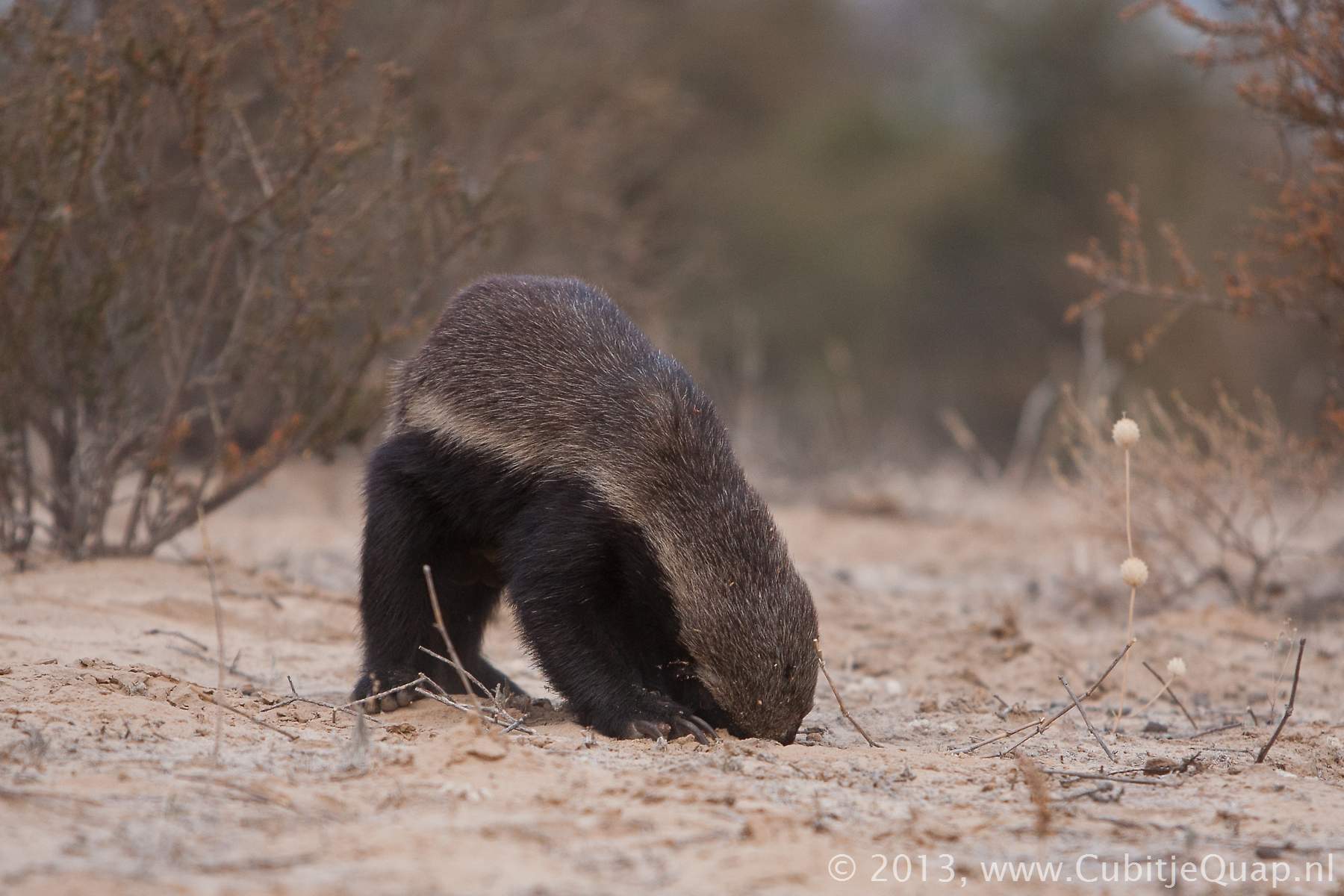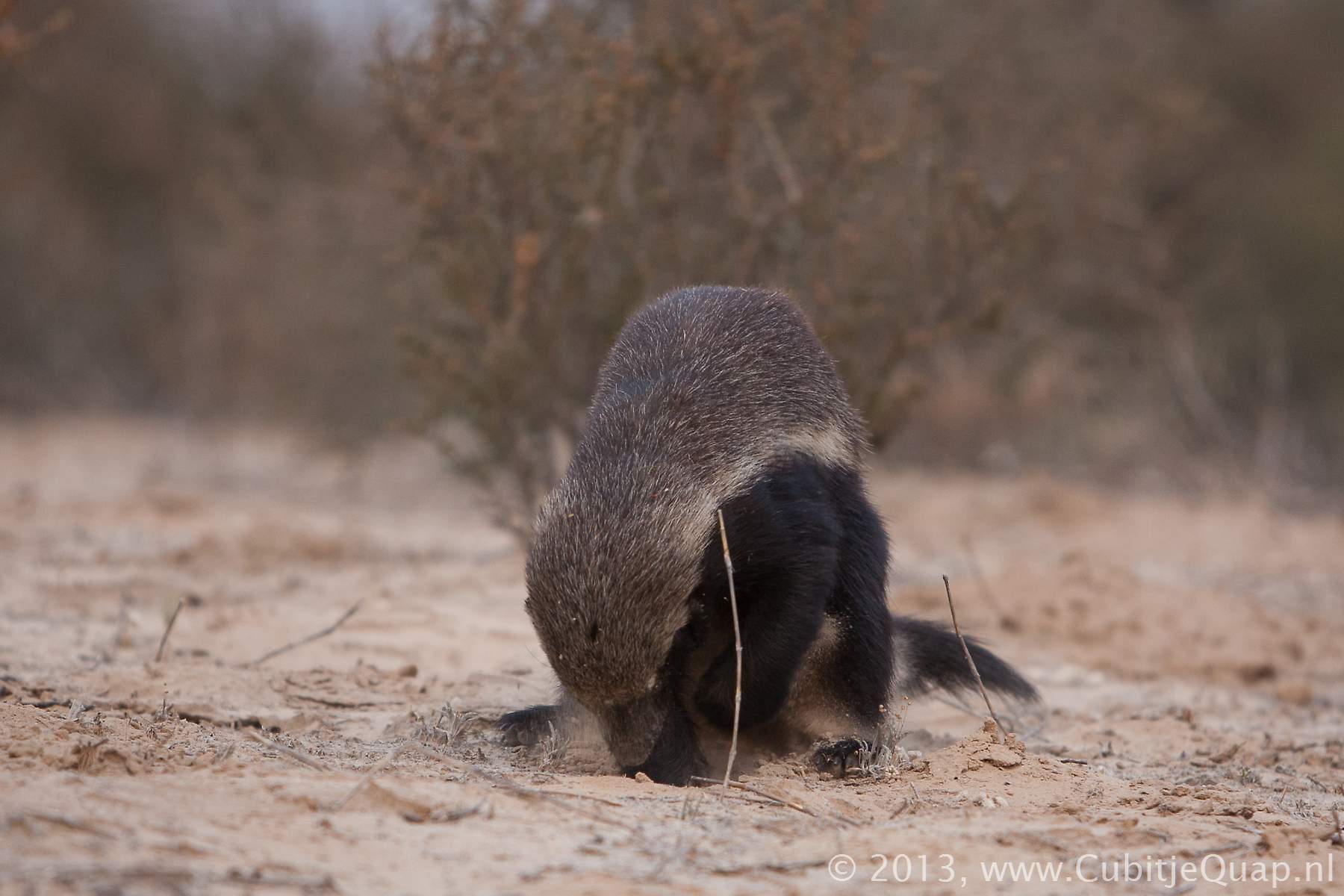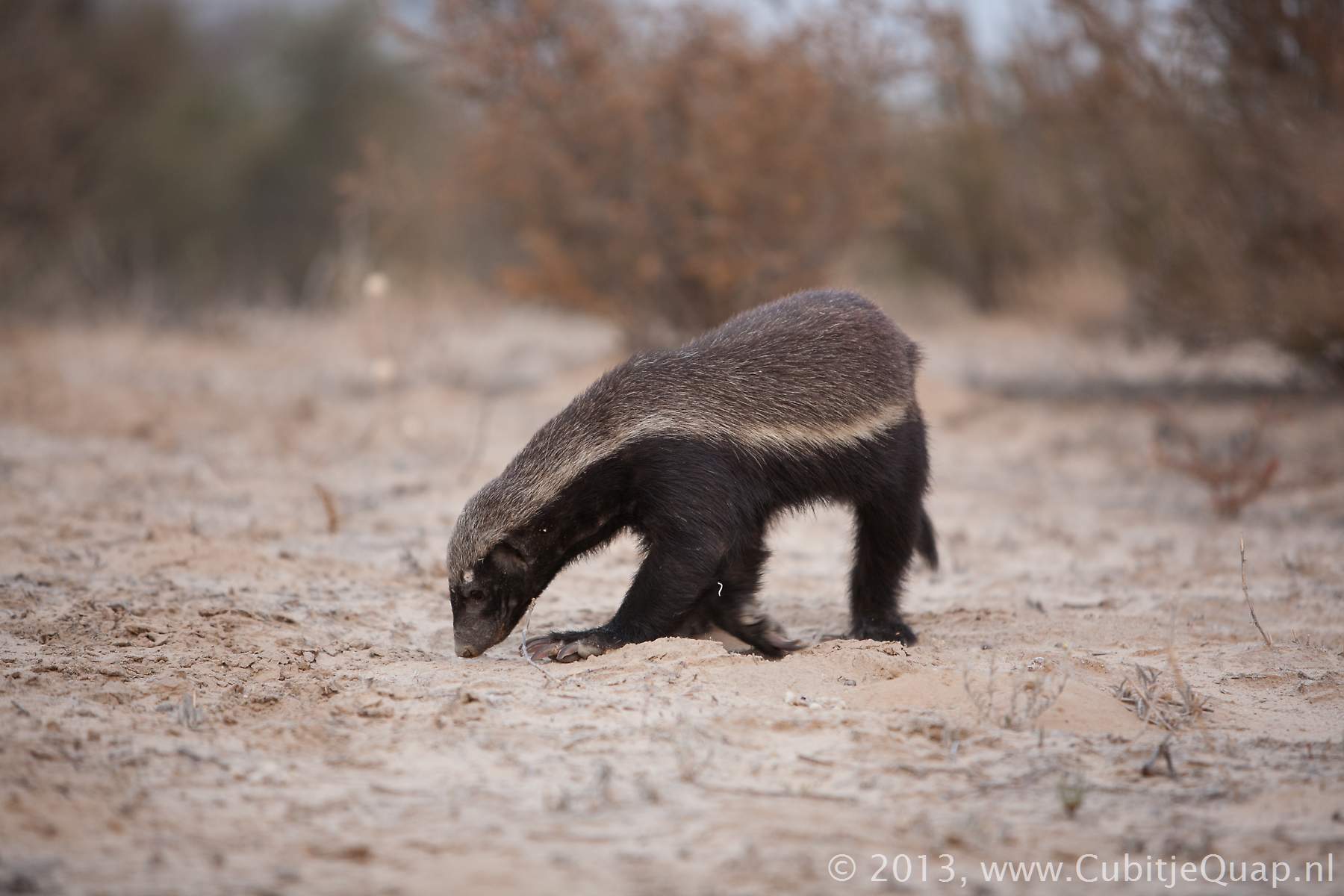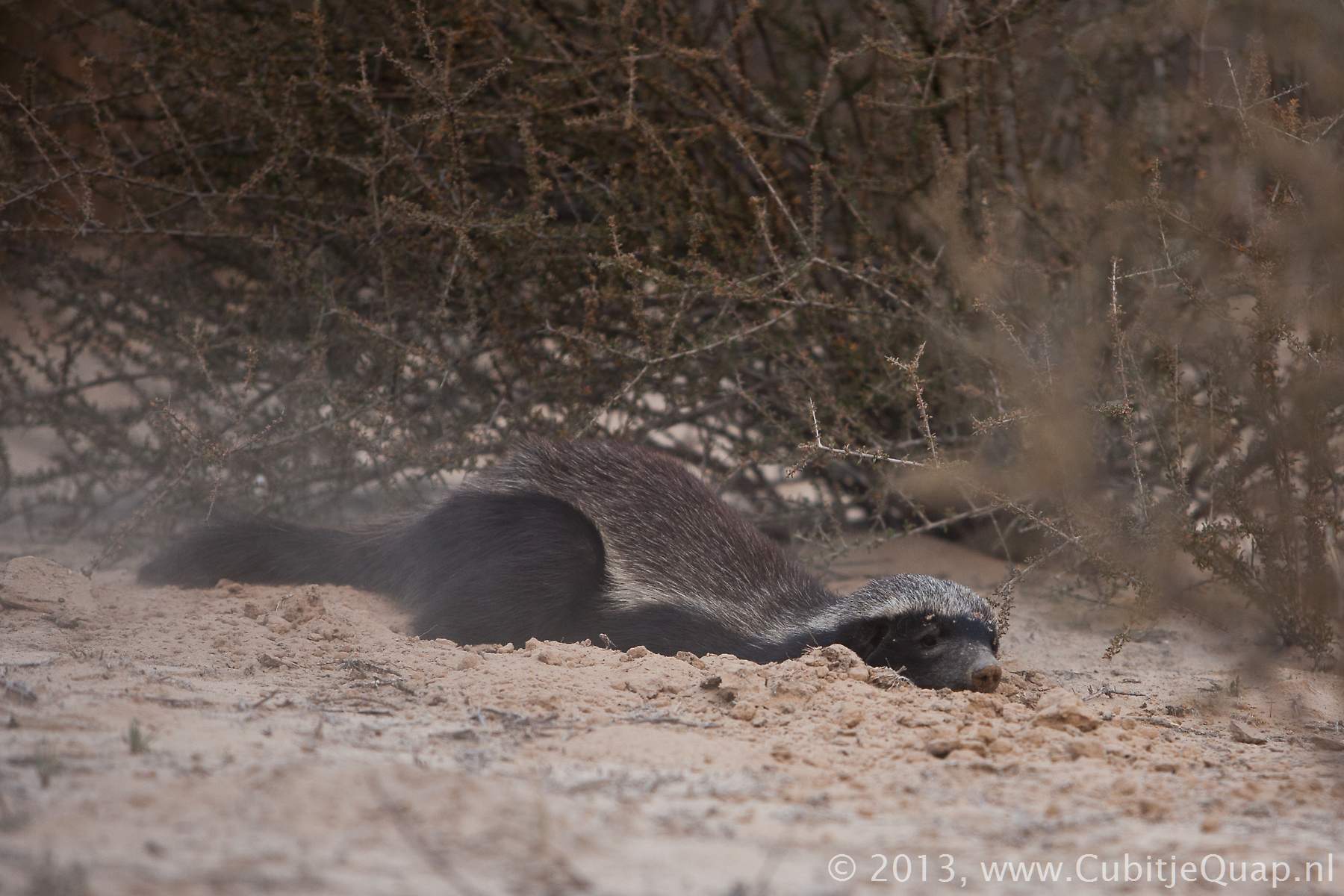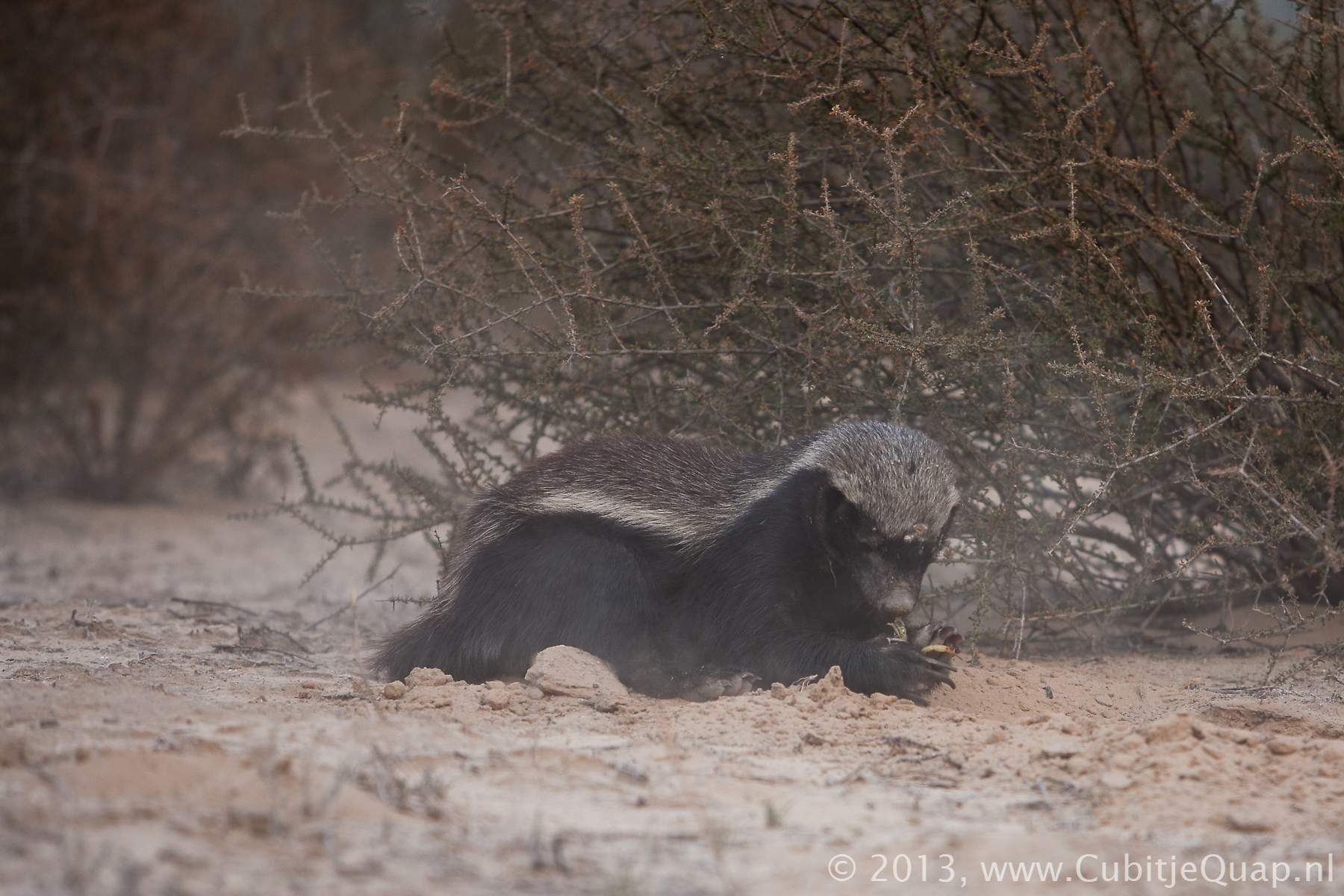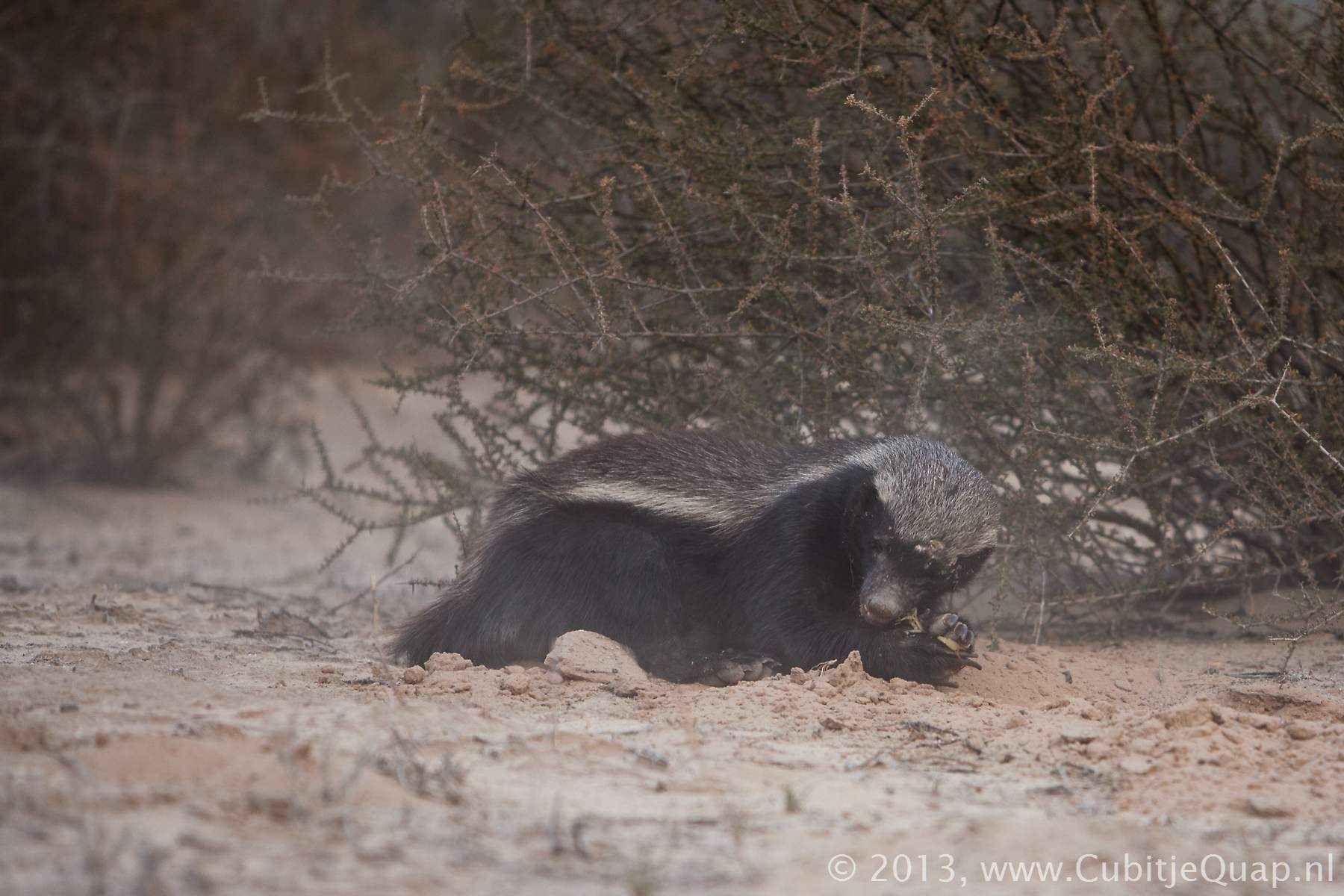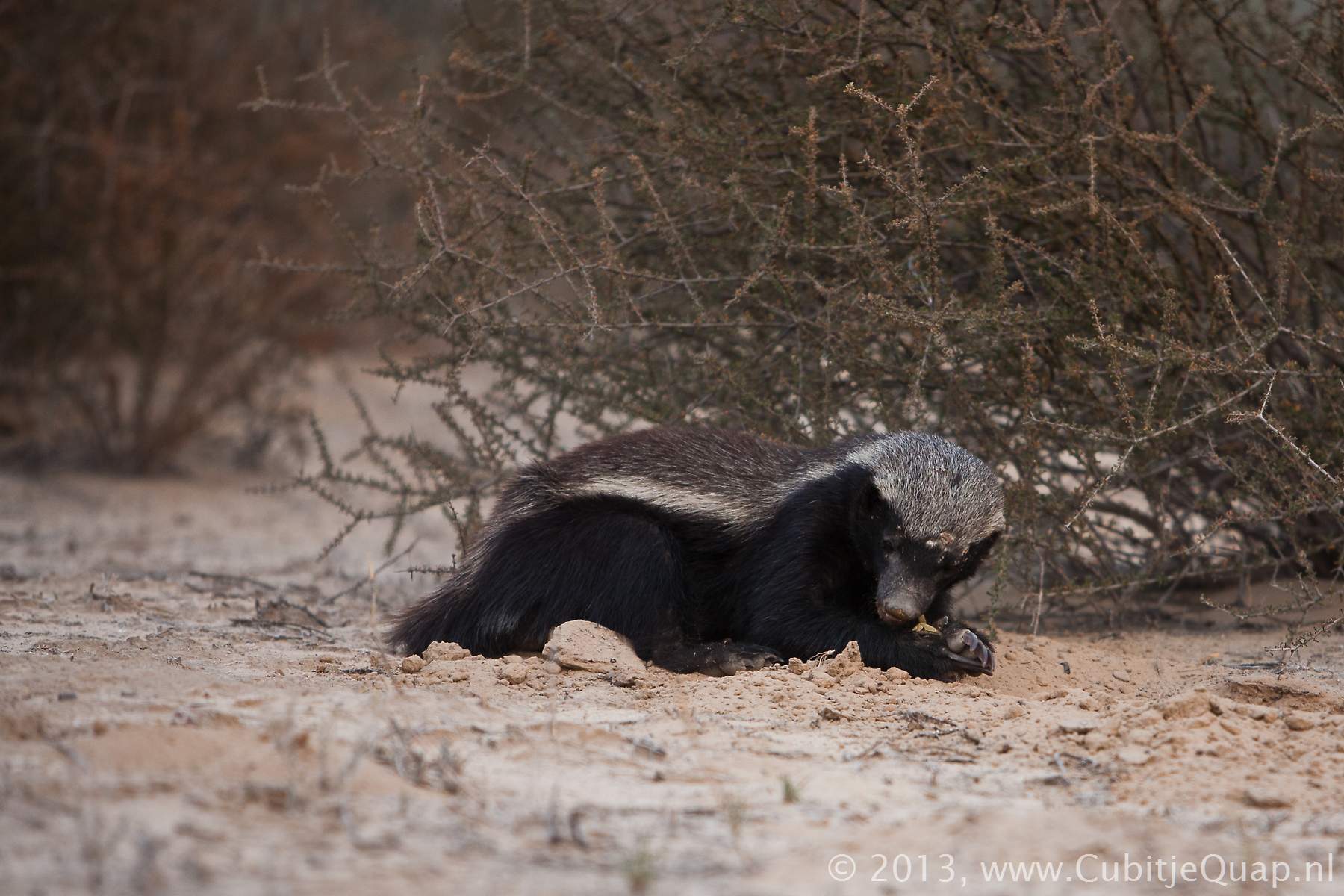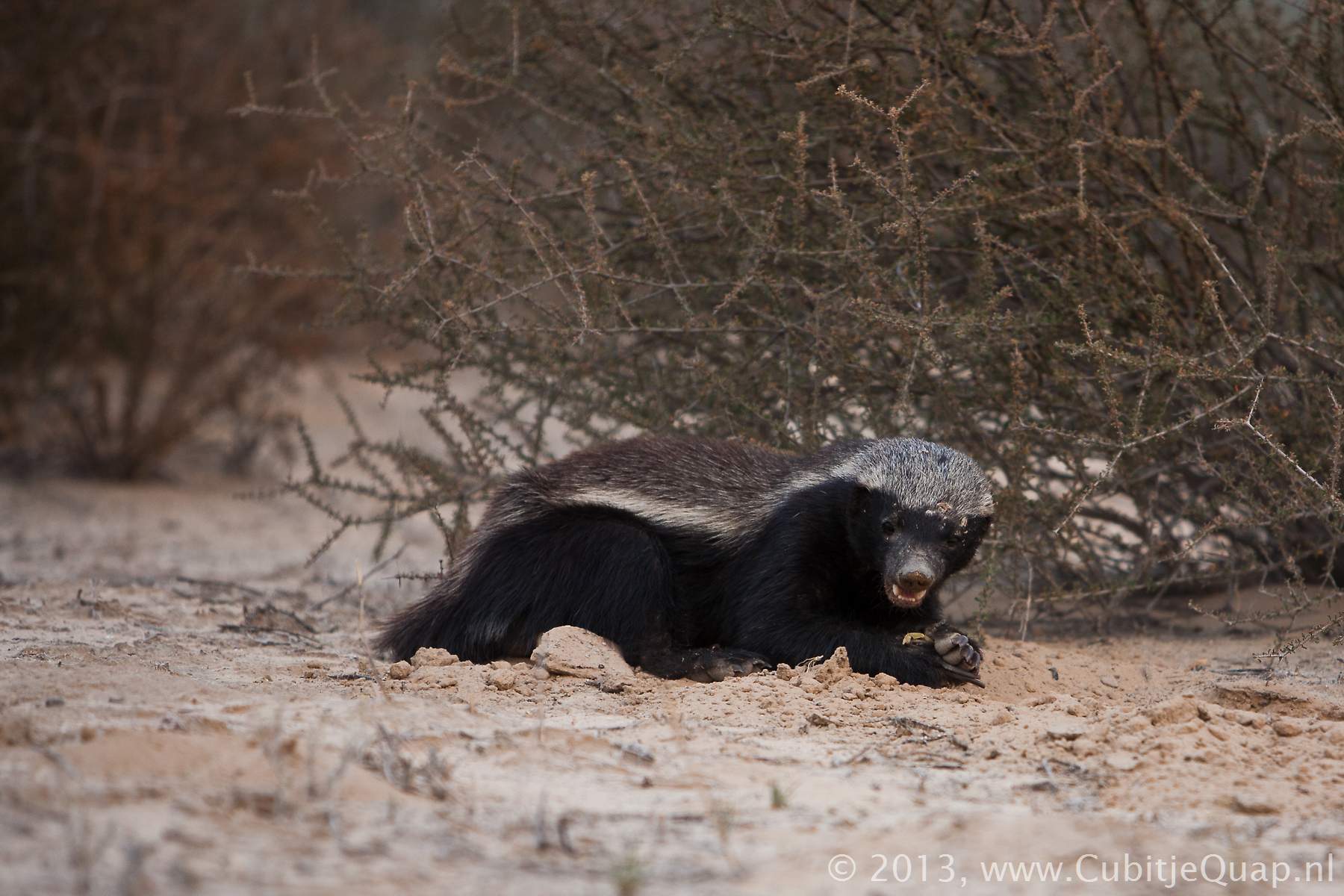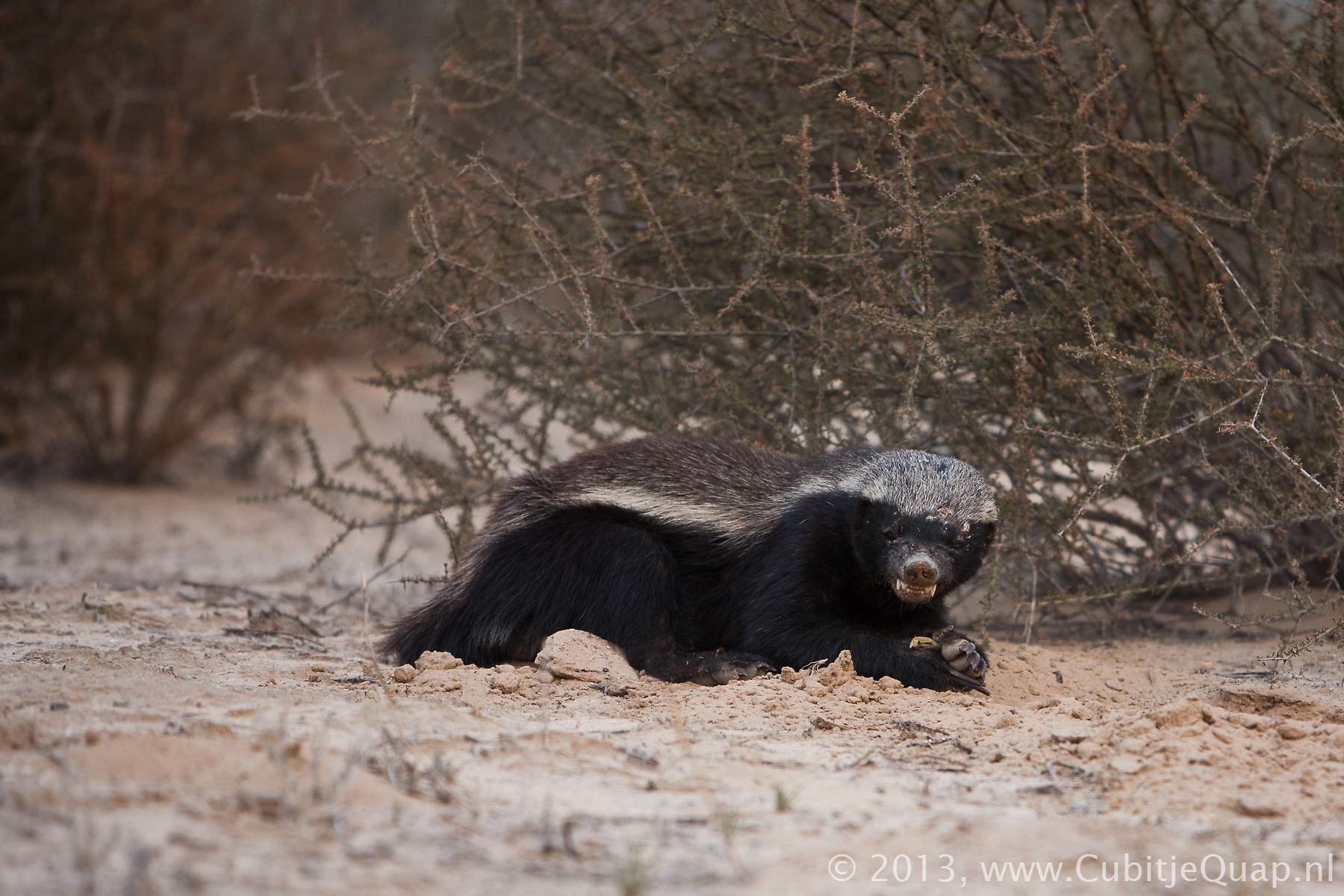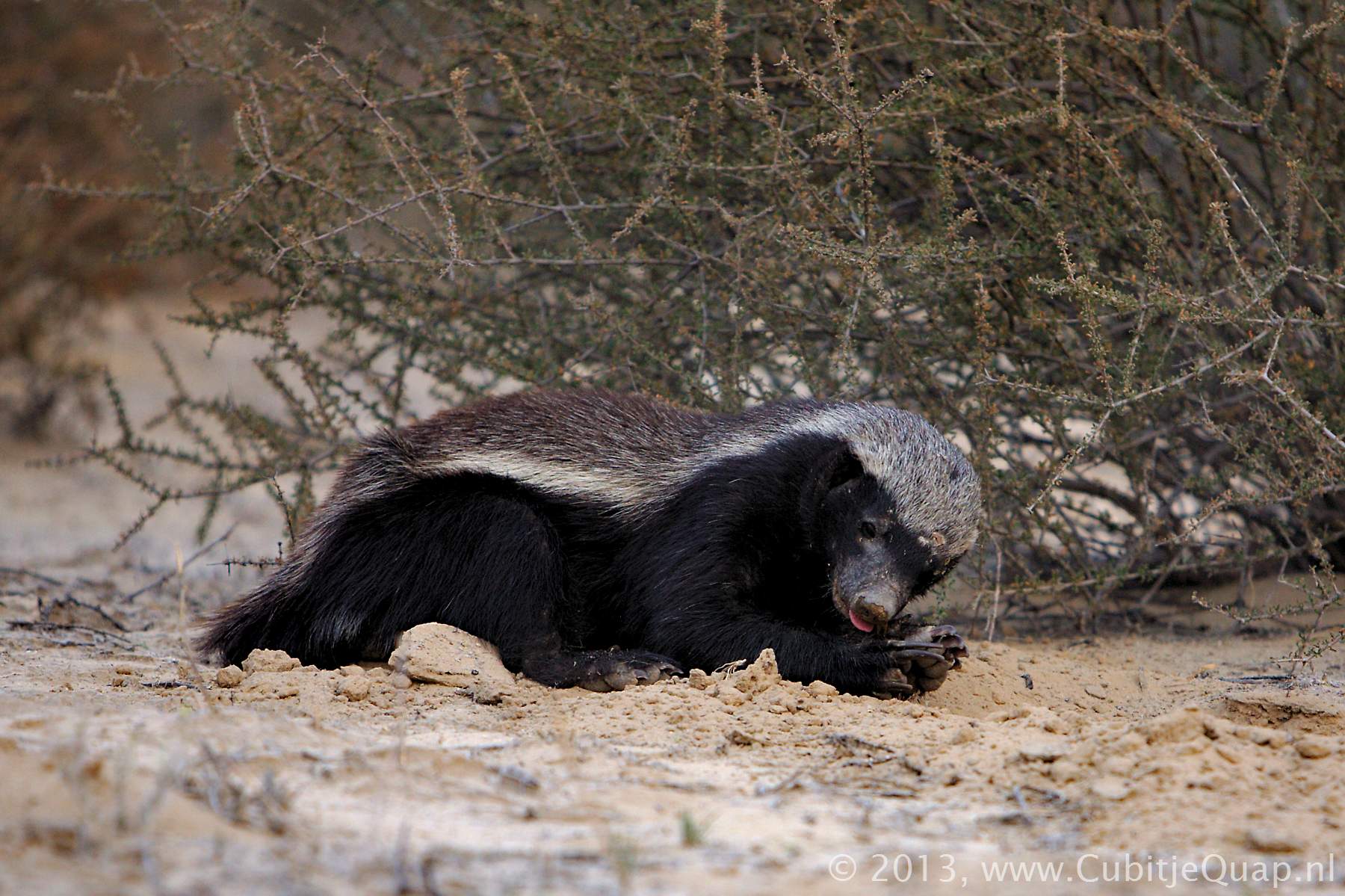Despite popular belief, there is no evidence that honeyguides (a bird species that eats bee larvae) guide the honey badger.
They locate their prey predominantly by their acute sense of smell and catch most of their prey through digging. As many as fifty holes
may be dug in a single foraging period and badgers may cover distances that exceed 40 kilometers in a 24 hour period. Honey badgers are accomplished climbers and can easily climb up into the uppermost branches of trees to raid bird nests or bee hives. In the Kalahari they have been seen raiding various raptor nests, including the Pale Chanting Goshawk, which is frequently seen in association with badgers.
They devour all parts of their prey, including skin, hair, feathers, flesh and bones, holding their food down with their forepaws.
(sc) Mellivora capensis
(nl) Honingdas
(af) Ratel

